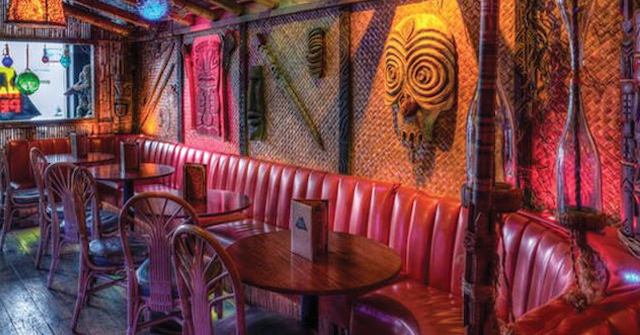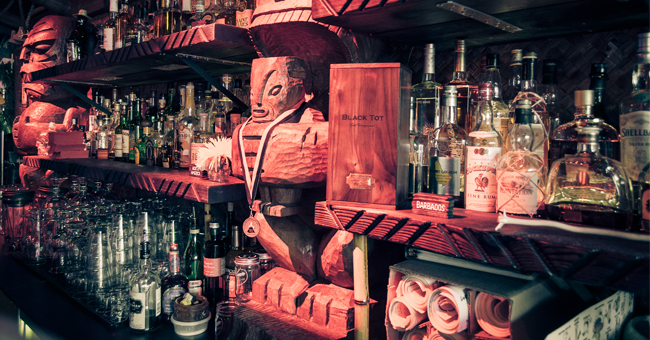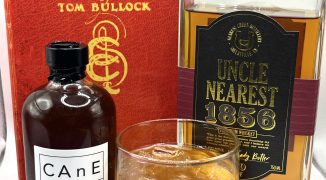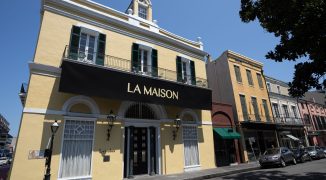Intimate, cozy and often evoking a secretive vibe, tiny bars are proof of the old adage that small is beautiful — at least from the customer’s perspective. But how does a bar team cope with managing the demands of staff, guests and supplies when working with limited space? We spoke to the people behind two much-loved small bars to find out.
El Libre in New Orleans has around 300 feet of customer space, which, managing partner and beverage director Konrad Kantor told us, is “generally 200 square feet short of what is required to receive a liquor license. We are grateful to the ATC commissioner for making a special exception in our case, as he felt we were enhancing the neighborhood.” El Libre’s cafe seats 16 comfortably, but with some outside seating it’s possible to fit up to 30 on a busy night. Still, he says, “no space is big enough. At least, that’s always been the case no matter where I’ve been working. We built our entire concept … and were careful about our limited size from the beginning. There are tons of great food items and cocktails we do not serve,” he added, “not because we don’t know how, but because we are honest with what we can do effectively and efficiently.”
Portland’s Hale Pele clocks in at 900 square feet with approximately 550-600 square feet dedicated to guests. “Our capacity is 48,” lead bartender Mijana Kucan told us, “but we can squeeze up to 60 in there.”
“When the bar first opened,” she says, “we weren’t nearly as busy as we are now, so our patterns have evolved for being prepared in the most efficient way possible.”
Here are four ways El Libre and Hale Pale make it work.
Get smart about storage:
Kucan: “We have an off-premise space that we use as a prep kitchen for food, syrups and citrus juices and for extra storage. Luckily it is only four blocks from the bar.”
The team at Hale Pele approach storage at three different levels:
1. Active storage: “Storage for things needed during the shift like juices, garnishes, fruit to replenish garnishes, liquor, straws and sodas. All of these things can be grabbed and replaced quickly, mostly stored behind the bar or a few steps from the well.”
2: Onsite and reachable storage. “These things are stocked before each shift daily. They are accessible during the shift, but not as quickly as they are stored under booths, in closets, or in the liquor room. (Examples of) these things are postcards for check presentation, pens, extra register tape, pineapple juice, coco Lopez, cherries, canned beer and sodas, soaps, napkins and tiki mugs.”
3. Offsite storage. “This is where our kitchen space comes in handy. The things that live there are the overflow of items that live in the booths and closets and can be pulled from as often as everyday to make sure each shift runs smoothly. We do our daily citrus juicing there, make our syrups as often as three times a week, prep food for the kitchen during service, and store extra dry goods (mostly tiki mugs as merchandise) and perishables. All of these things are delivered to the bar daily by the 2:30 p.m. call time for bartenders and servers so they can start prepping the garnishes and pineapple juice for service,” Kucan says.
 Hale Pele, which has about 500-600 square feet of seating space, uses their booths to stow things like postcards for check presentation, pens, extra register tape, soaps, napkins and tiki mugs. Photo courtesy of Hale Pele.
Hale Pele, which has about 500-600 square feet of seating space, uses their booths to stow things like postcards for check presentation, pens, extra register tape, soaps, napkins and tiki mugs. Photo courtesy of Hale Pele.
Make communication key:
Kucan: “All of this wouldn’t work if we didn’t have an amazing amount of communication and an incredible system in place that was created by Paddy Holland, the general manager and director of operations. Every night when we do our closing paperwork we also enter in the amount of juice left after the shift. The database calculates how much to juice for the next day based on sales that day the year before and the projection of sales now, and lets the prep person know how much produce and juice to bring over to the bar by 2:30 p.m. We are a well-oiled machine and it takes a team to get there. “
Design the space for bartenders, not looks:
Kantor: “The best advice I could give to any new bar that is struggling with a small space is to let a bartender design the bar. Far too often — and I’ve had to try and fix some of these situations — owners care more about the aesthetic of a bar than its actual functionality. A bar’s main function, regardless of how much importance is placed on aesthetic and atmosphere, is to serve drinks. If mechanics are allowed to have control over their workspaces and doctors are allowed to control everything that happens in the operating room, bartenders should have at least some control over the functional design of the place in which they will be working.”
It also helps to have a handy team member.
“(Another thing) we have done to maximize our space is to build shelves wherever there is wall space. Thanks to one of our owners, Jeff McRae, who is also a carpenter, we have brilliant installations that are very effective at meeting our needs for storage and shelf space.”
Focus on a few things and do them well:
Kantor: “We built our food and cocktail menu knowing we’d rather put out a limited but very consistent and great product than to fill our menu with everything people are expecting at a Cuban cafe. There are food options for every type of diet and for every time of day. The cocktail bar, which to my knowledge is the smallest in the entire city at four feet and three inches, features between 20 and 25 rums and a few key mixing ingredients for rum cocktails. In essence, we’d rather do a few things really well than a plethora of things barely above average.”
Ultimately, Kantor says, small bar proprietors must be honest about what they are capable of.
“Be honest about the size of the bar you have, and just focus on doing a few things well. If you’re running a neighborhood/dive bar, focus on having enough of each category of spirit or beer without overloading yourself with too much variety of product. If things don’t sell, take them off your shelf. If people want things you don’t have, it’s time to get the slow-moving stuff out and stock your bar with what people want. Few bars in any city can fully dictate what their average customer wants to drink. Stand by your model, but don’t feel that you are compromising if you let the bulk of your clientele shape some of your model. If you’re running a cocktail bar, be honest with yourself about what the bar can reasonably do. Cheater bottles work very well for bars that have more mixing ingredients than what the room in the wells allow for.
“Also, there’s no point of having twelve ‘featured’ cocktails on a menu if six of them are lackluster. A menu is only as good as its worst drink, just as a bar is only as good as its weakest bartender.”





